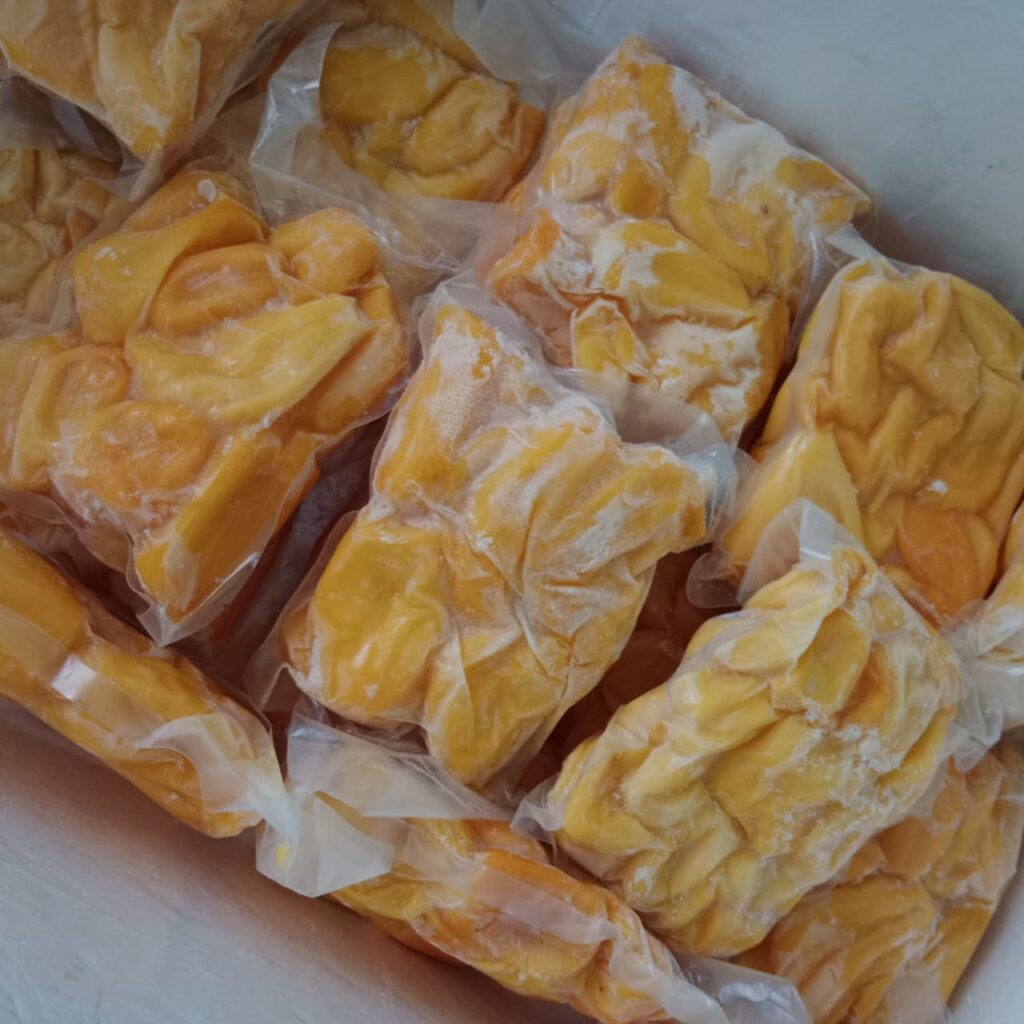Jackfruit, known scientifically as Artocarpus heterophyllus, is a tropical fruit native to South and Southeast Asia. In Indonesia, it is widely known as “nangka” and holds cultural, culinary, and nutritional importance. With its massive size, unique texture, and versatility, jackfruit has gained global attention as both a delicious fruit and a meat substitute in vegetarian and vegan diets.
One of the most striking features of jackfruit is its size. It is considered the largest tree-borne fruit in the world, capable of weighing up to 40 kilograms and reaching 90 centimeters in length. The outer skin is thick and green, covered in small spiky bumps. Inside, the fruit consists of yellow pods, each surrounding a large seed. These pods are the edible flesh that can be eaten raw or cooked, while the seeds can also be boiled, roasted, or ground into flour.
Jackfruit is highly nutritious. It is rich in dietary fiber, vitamins A and C, potassium, magnesium, and antioxidants. The fruit provides natural energy due to its carbohydrate content, while still being relatively low in fat. Eating jackfruit supports digestive health, boosts the immune system, and contributes to overall vitality. The seeds, which are often overlooked, are also packed with protein and micronutrients, making them a valuable addition to the diet.
In culinary traditions, jackfruit is incredibly versatile. Ripe jackfruit has a naturally sweet flavor, somewhat similar to a mix of banana, mango, and pineapple. It is commonly enjoyed fresh, or used in desserts, smoothies, and ice creams. In Indonesia, nangka is often added to traditional sweets such as “kolak” (a coconut milk dessert) or used as a topping in shaved ice dishes.
Unripe jackfruit, on the other hand, is more fibrous and neutral in taste, which makes it an excellent ingredient in savory dishes. When cooked, its texture resembles pulled meat, making it popular in curries, stir-fries, and stews. In recent years, unripe jackfruit has become a global sensation as a plant-based substitute for meat in tacos, burgers, and sandwiches. This has contributed to jackfruit’s rising popularity among health-conscious and vegan communities around the world.
Beyond its role as food, jackfruit trees also provide economic and environmental benefits. The wood is durable and often used in furniture making, while the leaves serve as fodder for animals. Additionally, jackfruit cultivation requires relatively little maintenance, making it a sustainable crop for tropical farmers.
Culturally, jackfruit holds symbolic value in many Asian countries. It is often associated with abundance and prosperity due to its large size and plentiful pods. In Indonesia, nangka is also used in various traditional dishes during ceremonies and celebrations.
In conclusion, jackfruit is more than just a tropical fruit. It is a source of nutrition, a versatile cooking ingredient, a sustainable crop, and a symbol of cultural heritage. From its sweet ripe flesh to its savory unripe uses, nangka has proven itself as a truly remarkable fruit with global significance. As more people around the world discover its benefits, the jackfruit is sure to remain an important part of both traditional cuisines and modern diets.
